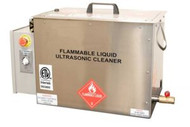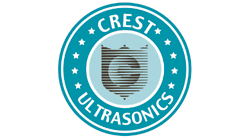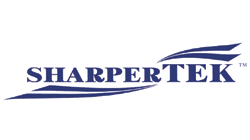An Explosion Proof Ultrasonic Cleaner Buyer's Guide
|
Let Us Help We can help you
find the perfect storage unit for your needs and budget. |
With Volatile Solvents, the Right Ultrasonic Equipment is Crucial
Most applications for ultrasonic cleaning use non-flammable water-based cleaning solutions. When these solutions leave unacceptable residues a volatile solvent can solve the problem but calls for an explosion-proof ultrasonic cleaner. This post defines volatile solvents, where they find application and how to safely use with an explosion proof ultrasonic cleaner.
Volatile Solvent Flash Points Defined
Volatile, also called flammable, solvents are used when removing contaminants from products that demand residue free cleanliness. Because these solvents are flammable, they require special precautions that can be met by using an explosion-proof ultrasonic cleaner.
A key point to classify volatility is called a "flash point" or the temperature at which a particular organic compound gives off sufficient vapor to ignite in air when given an ignition source. The lower the flash point the more likely the solvent will ignite.
Low flash point volatile solvents used in explosion-proof ultrasonic cleaners include 1-propanol (IPA) at 53⁰F, acetone at -4⁰F and toluene at 40⁰F. Details on other common organic solvents and their flash points are available on the web.
Standard ultrasonic cleaners as well as the environment in which they normally operate can be dangerous when used with volatile solvents. That's why cleaning procedure modifications or explosion proof ultrasonic cleaners must be specified.
Where Explosion Proof Ultrasonic Cleaners are Used
- Surgical Implants. A common application is cleaning surgical implants along with reusable surgical and dental implements. These are frequently cleaned using IPA. Reasons? It evaporates quickly, is relatively non-toxic, and residue-free.
- Small X-ray tube components are cleaned in a volatile solvent to yield absolutely contamination-free results.
- Electronic Components. Printed circuit boards, motherboards and other electronic components may accumulate solder flux and other contaminants during manufacture that must be removed prior to shipment.
- Regularly cleaning powder coating nozzles is an important procedure to maintain quality coatings.
Explosion Proof Ultrasonic Cleaners for Volatile Solvents
iUltrasonic offers a number of options whereby ultrasonic cleaning energy can safely be employed when using flammable solvents such as IPA. Here are 3 examples
Example 1: Isolate the Solvent from the Environment
This method works best when the parts to be cleaned are relatively small and cleaning is done on an occasional basis rather than as a full-time procedure.
Carefully place the parts in a flask or beaker and add just enough solvent to ensure they are fully immersed. Cover the container loosely to minimize the vapor that will result during the cleaning process.
In this instance you can use tap water with a surfactant in the ultrasonic cleaning tank. Before proceeding remember to degas the solution by selecting the "degas" mode (if equipped) or by running the cleaner for 15 to 20 minutes without a load or until bubbles no longer rise to the surface.
Flasks can be fixed into position in a mesh basket using flask clamps, and beakers can be supported using a beaker cover instead of a basket.
In either case, the bottom 1-2 inches of the containers should be immersed in the water. The ultrasonic energy will penetrate the glass walls and cavitation action will occur in the IPA. At the conclusion of the process carefully remove the parts which, when dry, will be residue free.
iUltrasonic offers three beaker kit options for use with volatile solvents.
Example 2: Cleaning Larger Parts with Flammable Solvents
For large scale operations the SOL XP flammable liquid ultrasonic cleaning systems in 6 tank sizes from 2 to 33 gallons are available from iUltrasonic. These are designed to be used with low flash point volatile solvents.
These 40 kHz ultrasonic frequency units are compliant with all Class I, Division 1 (CID1) code and zone requirements. Different only in tank dimensions and capacities they can be fitted with a cooling jacket around the upper tank perimeter to capture solvent vapor and reduce odor.
The SOL XP explosion proof ultrasonic cleaners can be ordered with an Intertek ETL Certification and are shipped with a remote electrical panel to be located outside the CID1 envelope.
Units are nitrogen inerted for additional fire protection. Ask us about included and optional features on these units.
Example 3: An Explosion Proof Ultrasonic Cleaner for Very Small Parts
Extremely small parts such as watch parts, micro-optics, and micro-machined parts are very effectively cleaned, rinsed, and dried in the Elmasolvex VA ultrasonic cleaner.
This ultrasonic cleaner is certified to be explosion proof when used with solvents with a flash point ≥ 12°C (53⁰F). Optimum cleaning results are achieved using a combination of multi-frequency ultrasonic cleaning, oscillation, and vacuum technology. Cleaned parts are completely residue-free.
View this video for a short tutorial on how the Elmasolvex VA ultrasonic cleaner works then contact iUltrasonic for further details.
Critical Safety Precautions when Using Flammable Solvents
But there is more to selecting an explosion proof ultrasonic cleaner than the unit itself. Because of their volatility, using these solvents in an ultrasonic cleaner creates what is defined by the National Electric Code (NEC) as a hazardous location. This is because fumes or spilled solvents can be ignited by extraneous sources such as electrical equipment and associated wiring used in the vicinity of the unit.
Fumes must be vented using approved ventilation systems. Electrical equipment, wiring, lighting fixtures, outlets and similar equipment in the area must be rated as intrinsically safe by the National Electric Code, NFPA-70 Articles 500-503.
In short, all components and equipment must be listed by a nationally recognized testing lab such as Underwriters Laboratories or Factory Mutual.
We strongly encourage you to contact your local and company safety personnel to assure that you are incompliance.
Contact the explosion proof ultrasonic cleaning professionals for information on selecting and using an explosion proof ultrasonic cleaner.







